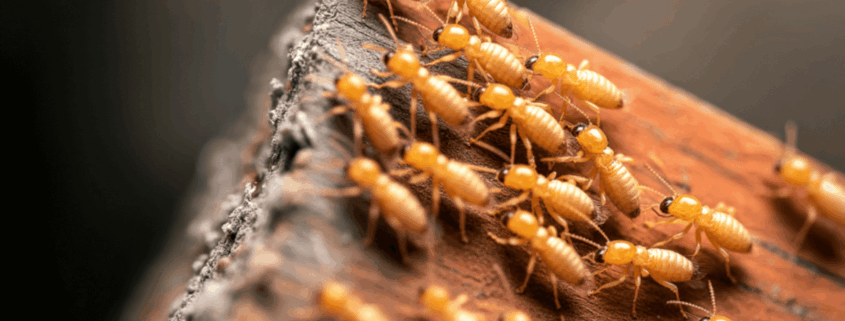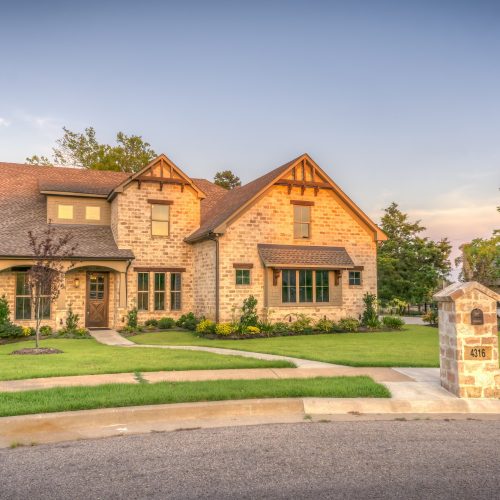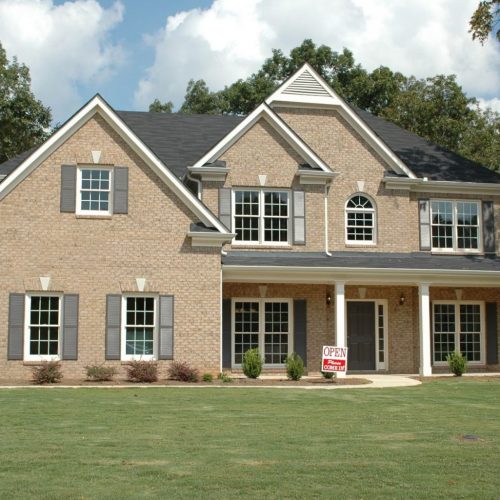Termite Letters (CL-100) in Greenville Closings: Requirements and Common Issues
The process of buying a home in Greenville, South Carolina, is filled with milestones. You find the perfect property, your offer is accepted, and you begin to picture your future. But between the accepted offer and the day you get the keys, there is a series of important steps, one of which often causes unforeseen stress: the Official South Carolina Wood Infestation Report, commonly known as the CL-100 or “termite letter.” For many, this document is a simple checkbox, but when it reveals hidden problems, it can delay or even jeopardize the entire transaction.
Navigating the complexities of real estate transactions requires careful attention to detail.
What Exactly is a CL-100 Report in South Carolina?
A CL-100, often mistakenly referred to as a simple “termite letter,” is in fact a highly specific and comprehensive document. Its official designation is the Official South Carolina Wood Infestation Report, a formal report meticulously prepared by a licensed and qualified pest control operator. This crucial document operates under the stringent oversight of the Department of Pesticide Regulation (DPR) at Clemson University, the authoritative body responsible for regulating all pest control operations within the state of South Carolina.
The core objective of the CL-100 is to provide a detailed account of any visible evidence pertaining to:
- Active or previous infestations: This includes the presence of subterranean termites or any other wood-destroying insects that may have compromised the structural integrity of a property.
- Visible damage: The report meticulously documents any discernible damage directly attributable to the destructive activities of these aforementioned organisms.
- The presence of wood decay fungi (wood rot): This critical component identifies any instances of wood rot, which can significantly weaken wooden structures and create environments conducive to further pest infestations.
- Adverse moisture conditions: The report also highlights any existing moisture issues that could potentially lead to the development of wood decay fungi or create favorable conditions for termite activity, emphasizing the importance of addressing these conditions to prevent future problems.
It is absolutely imperative to understand the limitations of a CL-100. It serves as a snapshot of conditions at a specific point in time and should not be misconstrued as a warranty or a guarantee that a home will forever remain free from termites or wood rot. The report is strictly confined to the visible and accessible areas for inspection on the day the assessment is conducted. Consequently, any hidden or inaccessible areas, such as those concealed behind walls, beneath flooring, or within insulation, fall outside the scope of this report and are not covered by its findings.
Is a CL-100 Required for Every Greenville Property Sale?
This is a common point of confusion. South Carolina state law does not mandate that a CL-100 inspection be performed for every real estate sale. However, in practice, it is a standard requirement for the vast majority of residential transactions in Greenville and across the Upstate.
The primary driver behind the requirement is the mortgage lender. Most lenders, including those providing FHA, VA, and conventional loans, will not finance a property without a “clear” CL-100 report. They require this documentation to protect their investment from potential structural damage caused by wood-destroying organisms. For this reason, the standard South Carolina Association of Realtors contract includes a clause making the sale contingent on the buyer obtaining a satisfactory report.
What Does a Pest Inspector Look For During a CL-100 Inspection?
A licensed inspector will conduct a thorough visual examination of the readily accessible areas of a home’s structure. This is a hands-on process focused on finding evidence of infestation, damage, or conducive conditions.
The inspector will be looking for:
- Evidence of Wood-Destroying Insects: This includes live insects, termite shelter tubes on foundation walls, dead insects, wings, or damaged wood.
- Damage from Wood-Destroying Insects: The inspector will probe wood in the subfloor, sill plates, and joists to check for softness or hollowed-out sections that indicate damage.
- Presence of Wood Decay Fungi: This fungus, which causes wood to rot and weaken, is reported when visible. Inspectors look for discoloration, softness, or fruiting bodies on the wood.
- Plumbing Leaks: Any active plumbing leaks in the crawlspace or basement that are wetting the subfloor or foundation are noted.
- Excessive Moisture Conditions: Using a moisture meter, the inspector will check moisture levels in the substructure. Elevated readings (typically above 20%) must be reported as they create a conducive environment for both termites and wood decay fungi.
- Inaccessible Areas: The report will specifically list any areas of the subfloor or foundation that could not be inspected due to low clearance, insulation, ductwork, or debris.
What are the Common Wood-Destroying Organisms Found in the Upstate?
While termites get the most attention, the CL-100 covers a range of organisms that can damage a home’s wooden structure. In the Greenville area, the most common findings include:
- Subterranean Termites: These are the most destructive wood-destroying insects in South Carolina. They live in underground colonies and build mud tubes to access the wood in a home, which is their food source.
- Powder Post Beetles and Old House Borers: These wood-boring beetles lay eggs in wood, and their larvae tunnel through it as they grow. They can cause significant damage over time, often leaving small, circular exit holes in their wake.
- Wood Decay Fungi: This is a frequently cited issue on Greenville CL-100 reports. It is a type of fungus that breaks down the structural components of wood, causing it to weaken and rot. It requires moisture to grow and is often found in damp crawl spaces.
How Do Moisture Readings Affect a CL-100 Report?
Moisture is the primary enemy of a home’s wooden substructure. A licensed pest control operator is required to use a moisture meter to test wood in the crawl space or basement. If the moisture content in the wood is found to be at or above a certain percentage (as determined by industry standards), it must be reported on the CL-100.
High moisture readings are a significant red flag for two reasons:
- They create a conducive environment for subterranean termites, which need moisture to survive.
- They are a necessary condition for the growth of wood decay fungi.
Common causes for elevated moisture in Greenville homes include poor drainage around the foundation, plumbing leaks, a lack of a proper vapor barrier in the crawl space, or HVAC condensation drainage issues.
What Happens if the CL-100 Report is Not “Clear”?
A “clear” letter is one where the inspector finds no visible evidence of active infestation, wood decay fungi, or disqualifying moisture conditions. If any of these issues are found, the report is considered “not clear.” This finding sets off a chain of events that must be resolved before the closing can proceed.
Common issues that result in a “not clear” report include:
- An active infestation of termites or other wood-destroying insects.
- Visible structural damage from a past or present infestation.
- The presence of wood decay fungi on the subfloor, joists, or sill plates.
- Elevated moisture readings in the structural wood.
- Plumbing leaks that are actively wetting the substructure.
- Earth-to-wood contact (e.g., siding or wood supports touching the ground).
- Large portions of the substructure being inaccessible for inspection.
When a report is not clear, the mortgage lender will typically halt the loan process until the issues are rectified and properly documented.
Who is Responsible for Repairs and Treatment?
The responsibility for addressing issues found on a CL-100 report is a point of negotiation, but it is typically defined in the real estate contract. Under the standard South Carolina contract, the seller is generally responsible for:
- Treating any active infestation.
- Repairing any structural damage noted on the report.
However, the seller’s financial responsibility is often capped at a predetermined amount or percentage of the sales price, which is negotiated when the contract is signed. If the cost of treatment and repairs exceeds this amount, the buyer and seller must renegotiate. The buyer may agree to pay for the excess costs, the seller may agree to cover them to save the deal, or, if no agreement can be reached, the contract may be terminated.
The Re-Inspection Process and Receiving a Clear Letter
Once a seller completes the necessary treatments and repairs, the work is not yet done. The original pest control company must be called back to perform a re-inspection.
During this second visit, the inspector will verify that the active infestation has been treated and that the damaged wood has been repaired according to industry standards. If the work is satisfactory, the company will then issue an updated, “clear” CL-100 or an official letter stating that the conditions on the original report have been corrected. This new documentation is then provided to the closing attorney and the buyer’s lender, allowing the transaction to move forward.
Common Pitfalls for Greenville Home Buyers and Sellers
The CL-100 process, crucial for real estate transactions, can often be a complex and challenging endeavor if not approached with meticulous attention and care. Both the buyer and the seller involved in a property transaction should be thoroughly informed and acutely aware of the various potential pitfalls and common issues that can arise during this critical phase. Understanding these challenges proactively can help ensure a smoother closing process and prevent unwelcome surprises.
For Buyers
Buyers, in particular, should exercise diligence and thoroughness when reviewing CL-100 reports. Their oversight in key areas can lead to significant problems down the line:
- Not Reading the Full Report: A common and costly mistake many buyers make is to merely skim the first page of the CL-100 report. They often glance only at the “Yes” or “No” checkboxes, quickly assessing for the presence of termites or other wood-destroying organisms. However, the crucial details and warnings are frequently hidden within the comments section and the accompanying graph. These sections can provide vital information regarding previous, but now inactive, termite issues, or highlight inaccessible areas within the property that could not be fully inspected. Ignoring these details means missing a comprehensive understanding of the property’s history and potential future risks.
- Assuming No History: A CL-100 letter, while offering a snapshot of the property’s condition, only reflects the findings on the specific day of the inspection. A clear report does not inherently mean that the house has never experienced termite infestations or damage in the past. It simply indicates the absence of active infestations or visible damage at the time of the inspection. Buyers should remain cautious and consider inquiring about the property’s historical pest control records, if available, to gain a more complete picture.
- Failing to Act: It’s imperative not to dismiss minor-sounding issues noted in the report as unimportant. What might appear as a slight mention of wood decay fungi or high moisture readings can, in fact, be early indicators of a much larger, underlying problem. These issues often precede or accompany significant structural damage or active termite infestations. Promptly addressing these concerns, even if they seem insignificant initially, is crucial to prevent escalation and avoid more extensive and costly repairs in the future.
For Sellers
Sellers also bear significant responsibilities in the CL-100 process, and neglecting these can severely impact the sale of their property:
- Waiting Too Long: A critical error sellers often make is procrastinating on ordering the CL-100 inspection. Scheduling it just a few days before the closing date leaves virtually no room to maneuver if problems are identified. Discovering active termites or significant wood damage at such a late stage can lead to considerable delays in the sale, potential renegotiations, or even the collapse of the deal, causing financial and logistical headaches.
- Hiring Unqualified Contractors: Should repairs be necessary after the initial CL-100 inspection, it is paramount that these repairs are conducted by qualified and experienced professionals. A superficial patch job by an unqualified handyman might not meet the stringent requirements for re-inspection and could fail to adequately address the underlying structural issues or pest problems. Proper, lasting repairs are essential to ensure the property passes subsequent inspections and to provide the buyer with confidence in their purchase.
- Hiding Past Problems: Transparency is key in real estate transactions. Failing to disclose known termite history, previous damage, or past treatment efforts can have severe legal ramifications for sellers after the sale has concluded. Such omissions can lead to lawsuits for misrepresentation or fraud, resulting in significant financial penalties and damage to the seller’s reputation. It is always advisable to be upfront about any known issues to avoid future complications.
How Long is a CL-100 Report Valid in South Carolina?
The Official South Carolina Wood Infestation Report is valid for 30 days from the date of the inspection. This relatively short window is because conditions in a home, particularly moisture levels, can change quickly.
This 30-day validity period makes timing a key factor. The inspection should be scheduled early enough to allow for potential repairs but close enough to the closing date so that it does not expire. If a closing is delayed for any reason and the 30-day mark passes, the lender will require a new CL-100 report, which is an additional cost for the buyer.
Navigating CL-100 Issues in Your Real Estate Closing
While a “not clear” CL-100 can be alarming, it is a common occurrence in real estate. With a proactive approach and professional guidance, these issues can almost always be resolved. A knowledgeable real estate closing attorney plays a vital part in this process by reviewing the report, explaining its implications, and facilitating communication between the buyer, seller, and real estate agents to ensure a solution is reached in accordance with the contract.
At The DeBruin Law Firm, we are committed to helping individuals and families navigate the complexities of real estate law in Greenville and the surrounding communities. We work diligently to ensure that every aspect of your closing is handled with precision, protecting your investment and your peace of mind.
If you are preparing to buy or sell a home and have questions about the closing process or any other real estate law matter, please contact our office. We are here to provide the clear guidance you need for a successful transaction. Call us today at (864) 982-5930 or send a message online to schedule a consultation.













Leave a Reply
Want to join the discussion?Feel free to contribute!